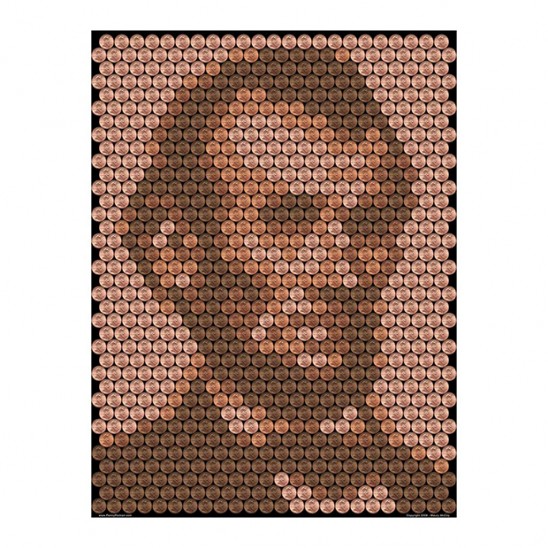 In spite of all the evidence suggesting the contrary, the answer is no. The evidence goes right back to the source of Lincoln’s legendary chin scruff. While campaigning for President in 1860, he received a letter from an 11-year-old girl named Grace Bedell, who encouraged him to grow his whiskers out because he “would look a great deal better.” She went on to explain, “All the ladies like whiskers and they would tease their husbands to vote for you and then you would be President.” Lincoln did comply with the girl’s wishes, but the key word here is “whiskers.” In the 19th century, whiskers and beards were very different things. Beards were facial hair allowed to grow unchecked. They were less reputable than their civilized, neatly trimmed counterpart, which is what (according to Grace) “all the ladies like.” President Rutherford B. Hayes had a beard. But President Abraham Lincoln had whiskers.
In spite of all the evidence suggesting the contrary, the answer is no. The evidence goes right back to the source of Lincoln’s legendary chin scruff. While campaigning for President in 1860, he received a letter from an 11-year-old girl named Grace Bedell, who encouraged him to grow his whiskers out because he “would look a great deal better.” She went on to explain, “All the ladies like whiskers and they would tease their husbands to vote for you and then you would be President.” Lincoln did comply with the girl’s wishes, but the key word here is “whiskers.” In the 19th century, whiskers and beards were very different things. Beards were facial hair allowed to grow unchecked. They were less reputable than their civilized, neatly trimmed counterpart, which is what (according to Grace) “all the ladies like.” President Rutherford B. Hayes had a beard. But President Abraham Lincoln had whiskers.
 Since the default expression in a photo now is a smile, we shout “cheese” because the word is supposed to make the corners of our mouth lift and our teeth show. However, in the early days of photography, facial expressions took their cues from traditional European fine art portraiture, where smiles were only sported by peasants, children and drunks—not exactly a good look. Paired with an etiquette and beauty standard that called for a small, tightly controlled mouth, looking good in photos was all about composure. It was for this reason that some early photographers asked that their subjects say “prunes” rather than the delicious dairy product we all know and love. We’re sure it did wonders for the plum-drying industry.
Since the default expression in a photo now is a smile, we shout “cheese” because the word is supposed to make the corners of our mouth lift and our teeth show. However, in the early days of photography, facial expressions took their cues from traditional European fine art portraiture, where smiles were only sported by peasants, children and drunks—not exactly a good look. Paired with an etiquette and beauty standard that called for a small, tightly controlled mouth, looking good in photos was all about composure. It was for this reason that some early photographers asked that their subjects say “prunes” rather than the delicious dairy product we all know and love. We’re sure it did wonders for the plum-drying industry.
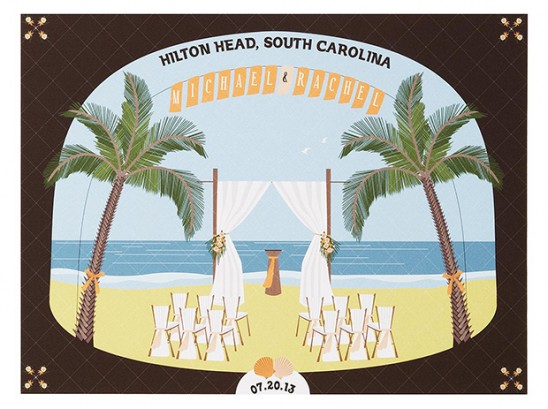 Bridesmaids’ dresses now might be the source for collective groans and unflattering necklines, but their origins included a lot less taffeta and a lot more body guarding. During the long walk from the bride’s home to the church, she ran the risk of attracting evil spirits or even running into jealous ex-lovers (awkward…) To protect her from these unpleasant run-ins, the bride’s closest friends were asked to wear a dress similar to the bride’s, so as to trick the spirits or jilted beaus. If this sounds like a tough job, the original duty of the Best Man takes the wedding cake—the groom’s best swordsman served as his armed guard in case the bride’s parents changed their minds and a kidnapping was in order. Now sit back, find the bride something borrowed and blue, and be glad you live in modern times.
Bridesmaids’ dresses now might be the source for collective groans and unflattering necklines, but their origins included a lot less taffeta and a lot more body guarding. During the long walk from the bride’s home to the church, she ran the risk of attracting evil spirits or even running into jealous ex-lovers (awkward…) To protect her from these unpleasant run-ins, the bride’s closest friends were asked to wear a dress similar to the bride’s, so as to trick the spirits or jilted beaus. If this sounds like a tough job, the original duty of the Best Man takes the wedding cake—the groom’s best swordsman served as his armed guard in case the bride’s parents changed their minds and a kidnapping was in order. Now sit back, find the bride something borrowed and blue, and be glad you live in modern times.
 There is one thing that science has yet to explain about bicycles: how exactly they stay up. You were probably taught in school that gyroscopic force keeps those spinning wheels upright. That was thought to be true until the 1970s, when it was proved that a bicycle wheel simply doesn’t have enough mass for its gyroscopic effect to keep a rider from falling. The next theory was that bikes stay upright through the “caster effect”. Picture how the caster wheels on a shopping cart are always able to turn so that they’re pointing the opposite direction that the cart is moving. In that same way, it was thought that as a bicycle wheel begins to tip out of alignment, the caster effect would cause it to turn slightly and correct itself. But then a team of physicist invented a modified bicycle with special features that cancelled out both gyroscopic and caster effects—and sure enough, it worked just as well without them. Since then, the prevailing theory of how a bicycle works is… nothing. No one knows. It’s a phenomenon so common that a child can learn to control it, yet so mysterious that the greatest minds in the world have yet to figure it out.
There is one thing that science has yet to explain about bicycles: how exactly they stay up. You were probably taught in school that gyroscopic force keeps those spinning wheels upright. That was thought to be true until the 1970s, when it was proved that a bicycle wheel simply doesn’t have enough mass for its gyroscopic effect to keep a rider from falling. The next theory was that bikes stay upright through the “caster effect”. Picture how the caster wheels on a shopping cart are always able to turn so that they’re pointing the opposite direction that the cart is moving. In that same way, it was thought that as a bicycle wheel begins to tip out of alignment, the caster effect would cause it to turn slightly and correct itself. But then a team of physicist invented a modified bicycle with special features that cancelled out both gyroscopic and caster effects—and sure enough, it worked just as well without them. Since then, the prevailing theory of how a bicycle works is… nothing. No one knows. It’s a phenomenon so common that a child can learn to control it, yet so mysterious that the greatest minds in the world have yet to figure it out.
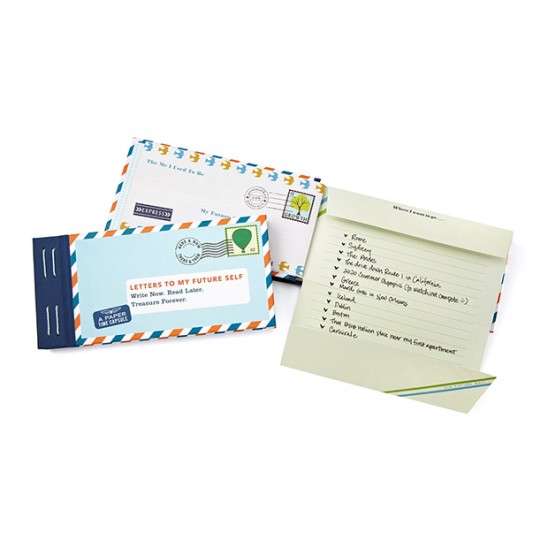 In the late 1950s, the United States Postmaster General was looking for ways to deliver mail faster over greater distances. Drawing inspiration from Cold War technology, he decided to use the most powerful delivery device available: a Regulus cruise missile. In June, 1959, the nuclear warhead was removed from one of the rockets and replaced with a shipment of 3,000 commemorative postcards. Then, instead of just firing the missile from one post office to another, it was loaded onto a submarine and carried out into the Atlantic Ocean off the coast of Florida, and launched at a speed of Mach 2 (680 miles/second) toward a special landing site outside Jacksonville. From there, the mail had to be retrieved and sorted before finally being delivered. In spite of the enormous expense and the impracticality of this procedure, the Postmaster General declared the experiment a great success. Albeit one that was destined to never be repeated.
In the late 1950s, the United States Postmaster General was looking for ways to deliver mail faster over greater distances. Drawing inspiration from Cold War technology, he decided to use the most powerful delivery device available: a Regulus cruise missile. In June, 1959, the nuclear warhead was removed from one of the rockets and replaced with a shipment of 3,000 commemorative postcards. Then, instead of just firing the missile from one post office to another, it was loaded onto a submarine and carried out into the Atlantic Ocean off the coast of Florida, and launched at a speed of Mach 2 (680 miles/second) toward a special landing site outside Jacksonville. From there, the mail had to be retrieved and sorted before finally being delivered. In spite of the enormous expense and the impracticality of this procedure, the Postmaster General declared the experiment a great success. Albeit one that was destined to never be repeated.
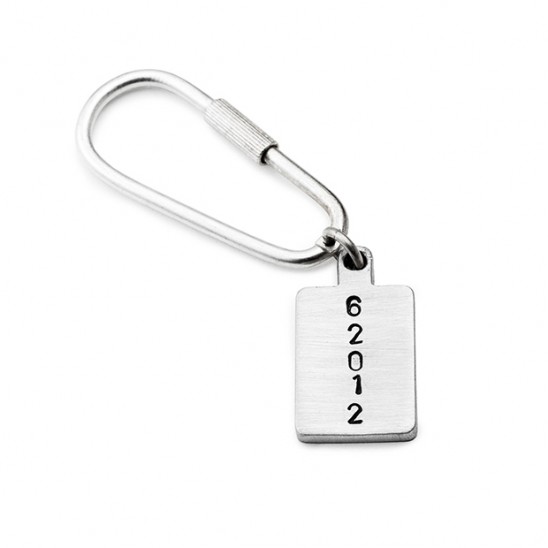 The ZIP code is the five digit number at the end of a United States mailing address that helps direct your letter to where it needs to go. But how is it possible to indicate every place in such a large country using only 5 numbers? The secret is in the way the codes are assigned—they aren’t just given out one to each city in numerical order. The first number in the ZIP represents a specific cluster of several states. In general, the numbers are lower to the north and east, and higher in the south and west. Thus, all the ZIP codes in Maine start with 0, while California gets a 9 for theirs. The second and third numbers indicate a Sectional Center Facility within those regions. These are not your ordinary post offices—they are not open to the public, and they typically operate overnight so that they can get the mail sorted and sent out by the next day. A Sectional Center Facility is responsible for handling mail from nearby cities, each of which is indicated by the final two numbers of the ZIP. The assigning of those numbers is not entirely consistent, but for the most part they begin with the largest city in the area, and after that are distributed alphabetically by city name. Large cities may have more than one ZIP code, and some mail-intensive addresses, such as universities or corporate offices, may have their own. But even so, there are fewer than 99 ZIPs handled by each Sectional Center Facility, which means that even as the country’s population continues to grow, the mail will still be able to ZIP comfortably along.
The ZIP code is the five digit number at the end of a United States mailing address that helps direct your letter to where it needs to go. But how is it possible to indicate every place in such a large country using only 5 numbers? The secret is in the way the codes are assigned—they aren’t just given out one to each city in numerical order. The first number in the ZIP represents a specific cluster of several states. In general, the numbers are lower to the north and east, and higher in the south and west. Thus, all the ZIP codes in Maine start with 0, while California gets a 9 for theirs. The second and third numbers indicate a Sectional Center Facility within those regions. These are not your ordinary post offices—they are not open to the public, and they typically operate overnight so that they can get the mail sorted and sent out by the next day. A Sectional Center Facility is responsible for handling mail from nearby cities, each of which is indicated by the final two numbers of the ZIP. The assigning of those numbers is not entirely consistent, but for the most part they begin with the largest city in the area, and after that are distributed alphabetically by city name. Large cities may have more than one ZIP code, and some mail-intensive addresses, such as universities or corporate offices, may have their own. But even so, there are fewer than 99 ZIPs handled by each Sectional Center Facility, which means that even as the country’s population continues to grow, the mail will still be able to ZIP comfortably along.
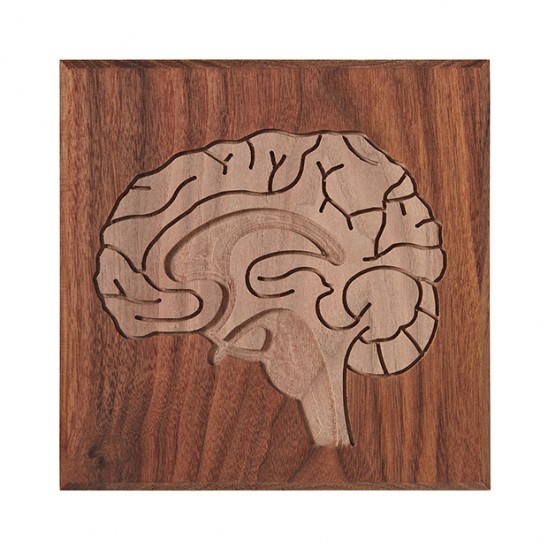 Pregnancy is no easy business—as your mother has probably pointed out many times (and as you may have reminded your own children). But among the many, often-uncomfortable changes that happen within a woman’s body during pregnancy, there is at least one unexpected plus side: a bigger brain. A team at the National Institute of Mental Health conducted MRI scans of women before and after birth, and found growth of gray matter in the parts of the brain that affect reasoning, judgment and sensory perception. So, remember all those times growing up, when your mom somehow knew what you were up to without having to be told? It wasn’t ESP. It was merely her mutant superpowers at work.
Pregnancy is no easy business—as your mother has probably pointed out many times (and as you may have reminded your own children). But among the many, often-uncomfortable changes that happen within a woman’s body during pregnancy, there is at least one unexpected plus side: a bigger brain. A team at the National Institute of Mental Health conducted MRI scans of women before and after birth, and found growth of gray matter in the parts of the brain that affect reasoning, judgment and sensory perception. So, remember all those times growing up, when your mom somehow knew what you were up to without having to be told? It wasn’t ESP. It was merely her mutant superpowers at work.
 Pretty much. Contrary to what she promised you at the dinner table, the assertion that carrots improve your eyesight is all part of a much more elaborate cover up. During WWII, German planes frequently made bombing runs over Great Britain. In response, the British set up a chain of radar stations across the southern coast of England so bombers could be detected and shot down before they reached land. This technology had to remain a secret, so the British intelligence service began a propaganda campaign that credited the incredible eyesight of soldiers for the improved defense. RAF fighter pilot John Cunningham was dubbed “Cat’s Eyes” for his ability to spot bombers in the dead of night, a talent owed to his carrot-heavy diet.
Pretty much. Contrary to what she promised you at the dinner table, the assertion that carrots improve your eyesight is all part of a much more elaborate cover up. During WWII, German planes frequently made bombing runs over Great Britain. In response, the British set up a chain of radar stations across the southern coast of England so bombers could be detected and shot down before they reached land. This technology had to remain a secret, so the British intelligence service began a propaganda campaign that credited the incredible eyesight of soldiers for the improved defense. RAF fighter pilot John Cunningham was dubbed “Cat’s Eyes” for his ability to spot bombers in the dead of night, a talent owed to his carrot-heavy diet.
This campaign spilled over to the Ministry of Food, which began producing root vegetable cooking pamphlets, along with a mascot named Dr. Carrot (motto: Carrots keep you healthy and help you see in a blackout!) Needless to say, people bought into this hyperbole-style advertising, and the cycle continued right up into your childhood dinners. But don’t despair; carrot’s beta-carotene is an important precursor for Vitamin A, which is good for your overall eye health. And while a Vitamin A deficiency can lead to night blindness, stocking up on it won’t do much about your prescription or your ability to see superhuman distances. Good thing mom raised you to do your research.
